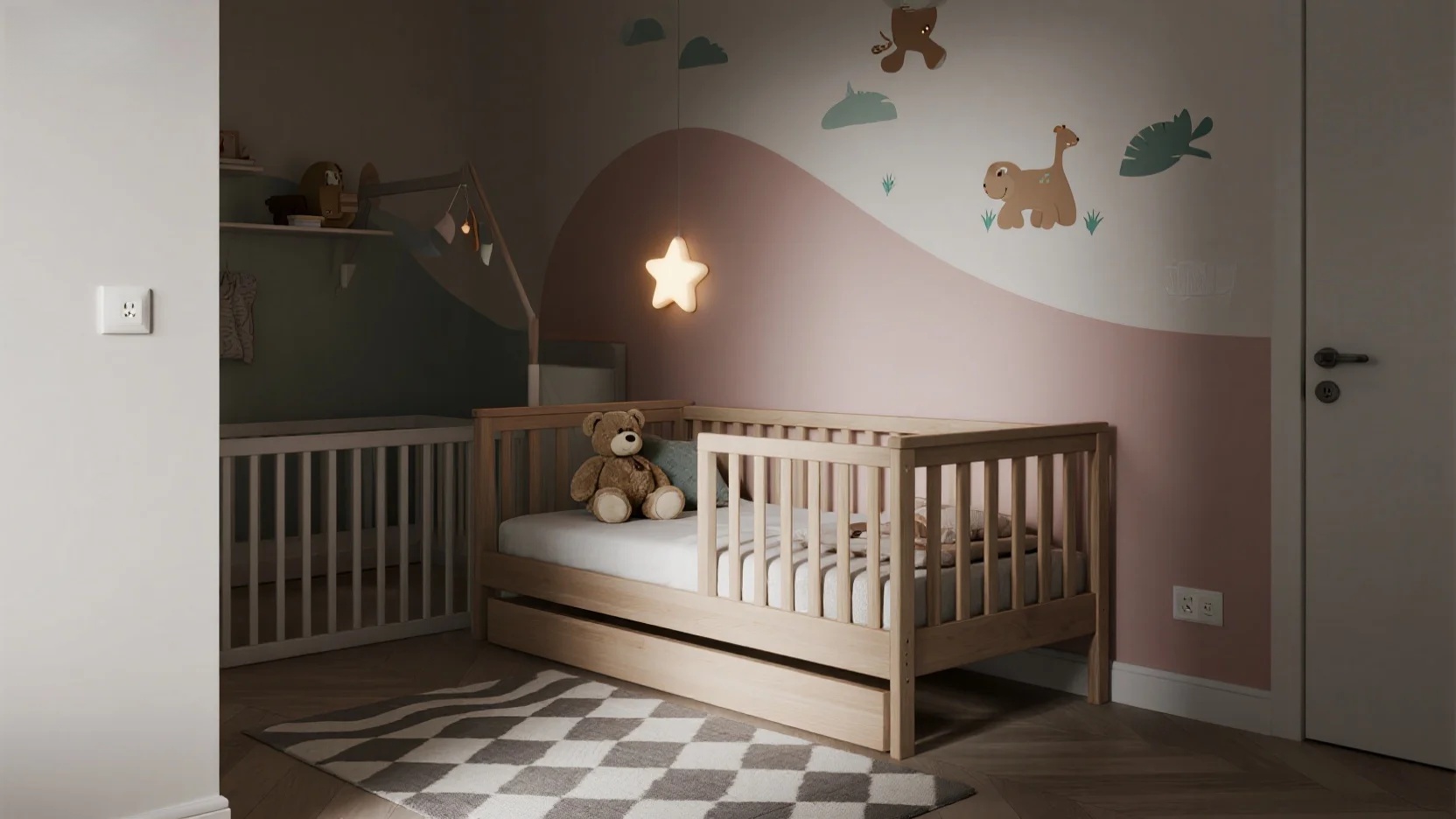Rest assured—most toddlers can learn to stay in bed overnight with the right strategies. It’s about setting up smart systems, not nightly battles.
🚼 Why Toddlers Wander at Night
Before solving the problem, understand the reasons:
- Curiosity or restlessness – They’re exploring new skills (walking, opening doors), making nighttime feel like playtime.
- Seeking comfort or attention – Even slight anxiety or missing you can trigger nighttime wandering.
- Normal developmental phase – Most toddlers start nighttime wandering or sleepwalking between 15-24 months. Safety, not scolding, is key.
🔐 1. Secure the Room for Safety
- Use a baby gate – Blocks access to stairs or unsafe areas while allowing airflow.
- Install a doorknob cover or childproof lock – Prevents them from opening the door.
- Add a door alarm or jingle bell – Alerts you if they leave the room.
🛏 2. Create a Safe & Cozy Sleep Space
- Switch to a low bed or floor mattress – Reduces fall risk if they climb out.
- Use bed rails or rolled towels – Prevents rolling off the bed.
- Childproof the room – Anchor furniture, cover outlets, secure blind cords.
- Optimize sleep conditions – Blackout curtains, white noise, comfy bedding.
**⏰ 3. Establish a Consistent Routine**
- Stick to a fixed bedtime & wake-up time (even on weekends).
- Use the “boring return” method – If they leave bed, calmly guide them back without talking or engaging.
- Try an “OK-to-Wake” clock – Teaches them to stay in bed until the light turns green (works for ages 2+).
**⭐ 4. Positive Reinforcement**
- Sticker chart – Reward nights they stay in bed (e.g., 5 stars = small prize).
- Morning praise – “You stayed in bed all night! Great job!”
🛎 5. Monitor Without Overreacting
- Use a baby monitor – Lets you check on them without entering the room.
- Avoid rushing in – If they leave bed, respond calmly to avoid reinforcing the behavior.
**⏳ 6. Be Patient & Consistent**
- Takes 5-10 nights for most toddlers to adjust.
- Don’t switch methods midweek – Consistency is key.
🚪 Fire Safety Note: Closing the Door
- Closed doors slow fires – But ensure the child can still open it in an emergency (use a childproof lock they can operate).
- Keep pathways clear – No tripping hazards in case of evacuation.
**✅ Final Tips**
✔ Secure the room (gate/lock)
✔ Make the bed safe (low mattress, rails)
✔ Stick to a routine (boring returns, OK-to-Wake clock)
✔ Praise progress (sticker chart, morning encouragement)
With patience and consistency, your toddler will learn to stay in bed—and everyone sleeps better! 😴








